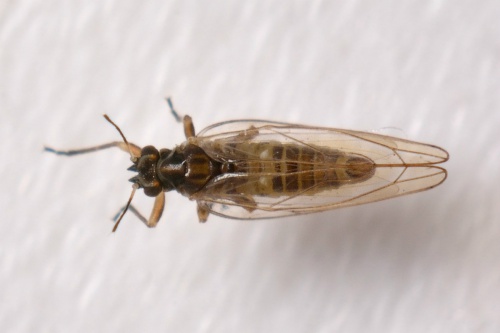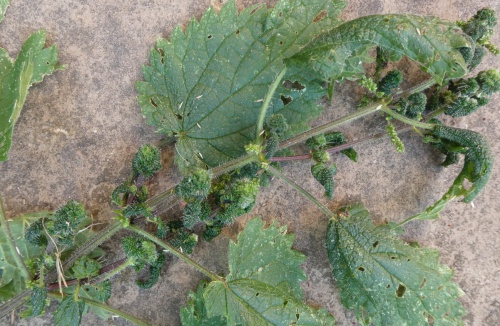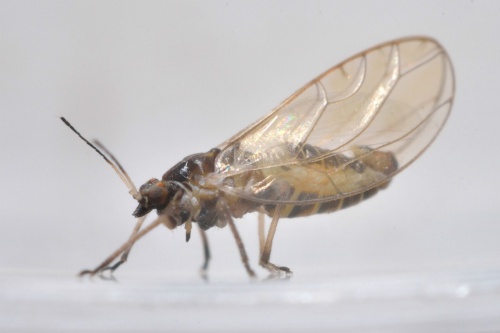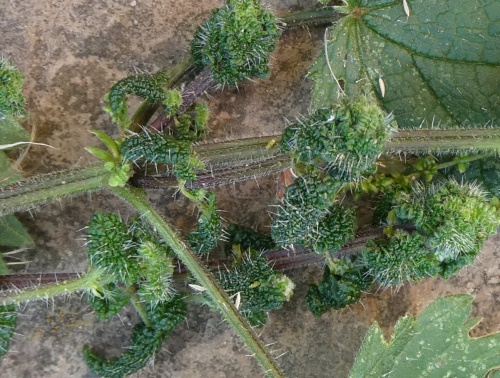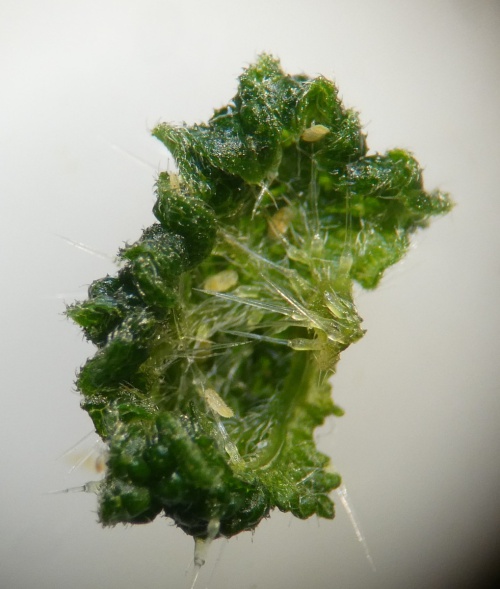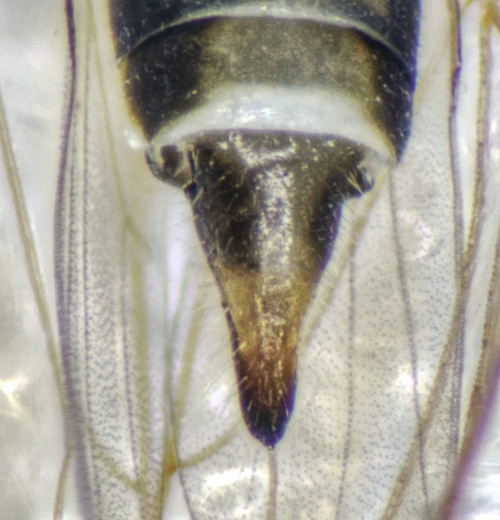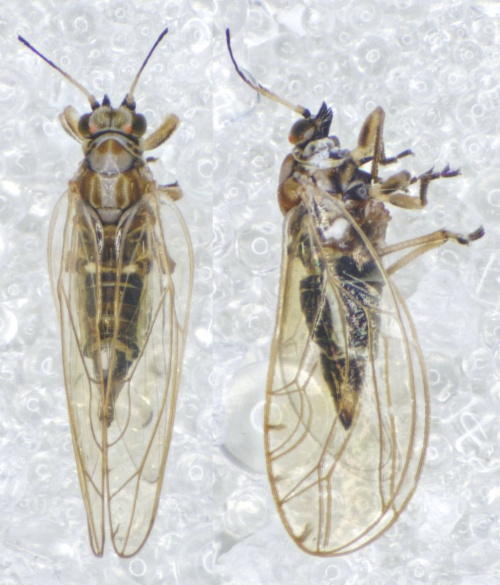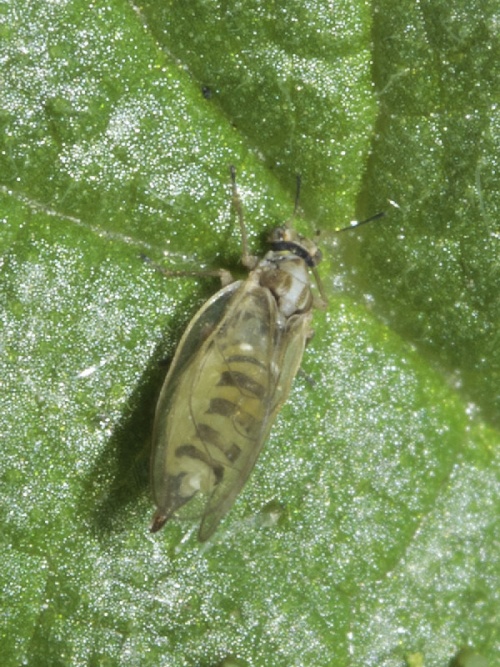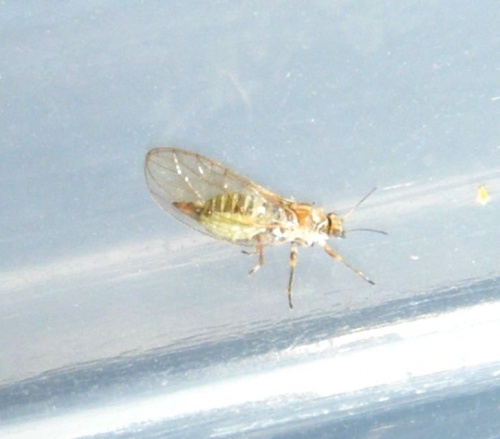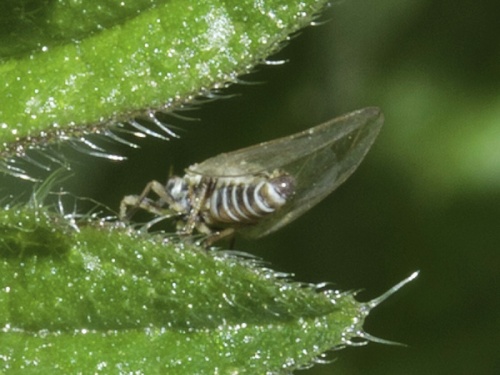Trioza urticae
Length 3 to 3.5 mm. This psyllid bug or jumping plant louse is a reasonably distinctive species in a large and difficult genus. Distinguishing features include the relatively rounded (for Trioza) forewings with long outer vein, which together with its occurrence on nettles, make it reasonably easy to identify, although colouration is quite variable. The three main veins arise from a single point, which is the thing that distinguishes Triozidae. Early instar nymphs are pale, but the later stages have a distinctive black patterning.
It causes galls on nettle; the young leaves are curled up and darker green, with the flat psyllids in a small depression beneath.
Anywhere that nettles are present. This is the only UK nettle-feeding psyllid.
All year round.
Nymphs cause galls on nettle leaves. The adults overwinter, and there can be as many as four generations in the UK per year.
Widespread and common in Britain.
Common in Leicestershire and Rutland.
Leicestershire & Rutland Map
Enter a town or village to see local records
MAP KEY:
Yellow squares = NBN records (all known data)
Coloured circles = NatureSpot records: 2025+ | 2020-2024 | pre-2020
UK Map
Species profile
- Species group:
- Bugs
- Kingdom:
- Animalia
- Order:
- Hemiptera
- Family:
- Triozidae
- Records on NatureSpot:
- 23
- First record:
- 07/01/2012 (Calow, Graham)
- Last record:
- 03/02/2025 (Nicholls, David)
Total records by month
% of records within its species group
10km squares with records
The latest images and records displayed below include those awaiting verification checks so we cannot guarantee that every identification is correct. Once accepted, the record displays a green tick.
In the Latest Records section, click on the header to sort A-Z, and again to sort Z-A. Use the header boxes to filter the list.


